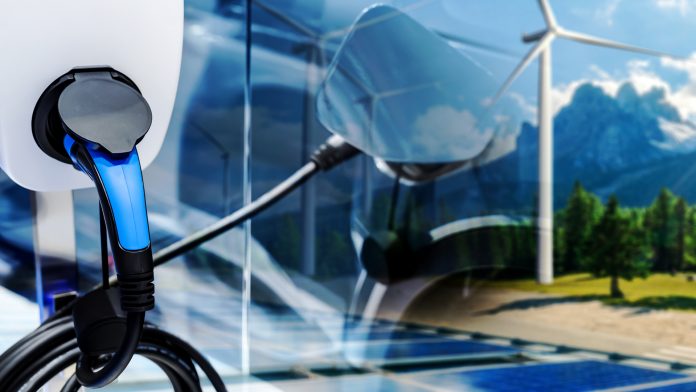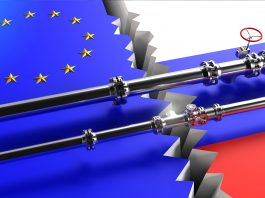David Leavy, Managing Director of advanced materials company ChemX Materials Ltd (ASX:CMX), details the efforts of the organisation in its mission to develop materials to support the energy transition and decarbonisation processes.
Based in Perth, Australia, ChemX is an advanced materials technology company focused on developing materials to further the clean energy transition and decarbonisation processes. At the heart of ChemX’s portfolio is its HiPurATM Process technology, designed to produce high purity alumina (HPA) and high purity alumina cathode precursor salts for lithium-ion batteries.
Furthering the road to decarbonisation and supporting the clean energy transition
Within its project portfolio, ChemX also has various projects designed to contribute to its decarbonisation and electrification goals. These include the Jamieson Tank Manganese project and the Kimba Kaolin/Rare Earth Element (REE) project, both on the Eyre Peninsula in South Australia.
The Innovation Platform spoke to Managing Director David Leavy to find out more about ChemX’s current progress, the key benefits of high purity alumina, and the future plans for the company.
Can you briefly summarise ChemX as a company? What are your key goals and objectives at present?
ChemX is a materials technology company focusing on both the mining and the chemistry associated with developing the critical materials needed for the clean energy transition and decarbonisation markets. There is currently a lot of investment in these markets to further innovation and develop the technologies, supply chains, and infrastructure required to achieve net zero by 2050.
We are vertically integrated with full responsibility for various stages of our production process, from exploration through to mining and processing. Our core strategy is to examine what the market need is and then determine how we can develop a project to meet that need.
High purity alumina is a key focus of your company. What are the main uses and benefits of HPA and why did you choose to focus your efforts in this area?
High purity alumina has two main uses.
The most publicised use currently is as a coating on the separator – known as a ceramic separator – in lithium batteries, which is really driving growth in demand for the material. A key benefit of having an HPA-coated separator is the significant thermal capacity it adds to the separator. Most separators will start to degrade at about 130°C, which is when it becomes potentially fire hazardous. One of the issues with lithium batteries is the potential for a thermal runaway, leading to the separator shrinking – if the anode and cathode touch each other, you get a short circuit which could potentially lead to a fire.
With an HPA-coated separator, however, the separator does not start to degrade until it reaches around 250°C. You therefore have a lot more time to manage the thermal issues in the battery, amongst any other problems that may arise. Within an EV battery pack, there are several thermal management processes in place, and by having the ceramic-coated separator, it gives those other processes time to cool the battery down.
Work is also being carried out on coating cathode particles with HPA to add stability to the battery chemistry, allowing for a reduction in the amount of cobalt in the chemistry. Cobalt’s main role is to add stability but, with the environmental, social and governance (ESG) concerns and a dwindling supply of cobalt, manufacturers are looking for ways to reduce its use.
The other key market lies with the creation of synthetic sapphire. Sapphire’s main historical market started in the early 2000s, with the development of LED lights and semiconductors, where it is used as a substrate. The material’s extremely hard nature makes it a durable solution for harsh environments. For example, it is used in various optical devices, in Light Detection and Ranging (LiDAR) systems, and in high-tech guidance systems.
How does ChemX’s HiPurA technology work and what makes it unique?
The HiPurA technology was designed around several key parameters, including to eliminate the need for a mine.
Various technologies, particularly in Australia, are focused on using kaolin as a feedstock, because it is over 30% alumina but requires mining. The process for that requires a long development timeframe, combined with the risk of running a mine. So, we wanted to avoid this.
The process to purify the kaolin is also very expensive. Initially, we carried out a pre-feasibility study on the kaolin HPA path, but the capital costs were very high, meaning that bringing it to market would be problematic. We quickly realised that this process would be difficult to get funded, despite it working very well technically. We knew that we would be unable to obtain offtakes until we were in production and, without an offtake, we would not be able to gain funding. Realising this continuous cycle, we quickly called time on this idea, which was then the catalyst to develop the HiPurA technology.
With the HiPurA technology, we use an aluminous chemical, removing the need for a mine. This method is scaleable, allowing us to begin with a small production capacity and grow relatively easily. Bringing the product to market as soon as possible is key, so the market can become familiar with using it. Producing a large volume upfront is problematic because the market is not used to using it and it will take time to build up a market presence. We have therefore developed the process so it can be relatively easy to upscale and it is modular, enabling a variety of potential options for the location of our processing facility. For example, in the UK/Europe where we are close to end buyers, reducing the carbon footprint of the logistics chain and the risk of supply disruptions.
How do you ensure that ChemX’s processes are sustainable and in line with ESG requirements?
Sustainability is at the heart of what we do. It is the markets that we are selling into, so our buyers demand it. Our customers carry out audits right through the battery supply chain to make sure that sustainability requirements are being achieved and that the claims they are making about their product can be backed up. It is therefore essential that we support this.
Our HPA production technology is much less energy intensive than traditional methods. We take an aluminous chemical and use the purification technology, carried out at ambient pressure. Therefore, the energy requirements of that part of the process are minimal.
Whilst the calcination stage of the process is fairly energy intensive currently, we are in negotiations with a solar energy supplier to ensure that the electricity we use is renewable.
In addition, one of the main by-products we produce is a fertiliser. We are currently in talks with fertiliser manufacturers in Perth about taking our by-product, which will leave us with roughly about 5kg per ton of solid waste. From a sustainability point of view, this is a good circular process.
What are the other key projects within ChemX’s portfolio and what progress do you foresee for them?
The next most advanced project is a manganese project to produce high purity manganese sulphate monohydrate, which is used as part of the cathode chemistry in lithium batteries.
We have a manganese deposit on the Eyre Peninsula in South Australia and the particular mineralogy of that, which is called cryptomelane, is a very simple mineralogy to upgrade. So far, we have completed one stage of test work to produce the manganese sulphate, with very encouraging results. We obtained a 99.7% pure manganese sulphate product without any purification steps. The main purpose of this programme was to establish how well our ore went through the process that was selected, to determine if it was the correct process to use. The next stage of test work is designed to produce a cathode-grade high purity manganese sulphate monohydrate product.
The other key project we have is kaolin and rare earth deposit. Kaolin is quite widespread, and we recently received a number of assays back that contained REE. Several companies in the area have also received very similar results to us. We need to investigate the kaolin in the area further to ensure that the REE occurrences are ionic in nature and to work out the most efficient method of separating them. This is a very exciting project, but it is in the very early days at present.
What does the rest of 2022 and the upcoming years look like for ChemX? What are your future goals for growth and to support the clean energy transition?
The HiPurA HPA project is our first priority. We are currently commissioning a micro plant, which is capable of producing about 5kg a day. So far, we have tested the technology in the laboratory and established that it works. The micro plant puts a continuous process in place. So, once we’ve produced the final product, we will know that the process works and then we can begin scaling up.
Primero, a Perth-based engineering company, is carrying out a pre-feasibility study on a pilot plant, which will be the next level up. We are still finalising the production scale of that, and the study will give us a good idea of how a larger scale project will look. The scaleup risk from laboratory to pilot plant will then give us a lot of confidence when we go for the commercial-scale plant.
A key part of the micro plant and the pilot plant is to provide samples to potential customers for the qualification process. Everything that goes into a battery cell must go through a very rigorous and time-consuming qualification process that takes at least eight to ten months to complete. This will include assessments on chemical tests, the separator machinery, right through to producing a battery cell, and then carrying out all the safety and cyclability tests to make sure that our product is up to their standard for the final product.
Obviously, the commissioning process comes with risks and potential challenges, but we have tested everything individually. We are quite confident that, from here, it should go well. The real test is to finish that commissioning, and then produce a product of 99.99% purity, which is the cut off for HPA. The next round of test work with the micro plant is to produce a product of even higher purity (99.999% and 99.9999% purity), which the sapphire market requires.
The micro plant will be finished by the end of July, and we should have the feasibility study on the pilot plant soon after. We aim to start construction of the pilot plant this calendar year after analysing the results obtained from the study. We are expecting the construction time on that to be between nine and 12 months from the start of construction. We are confident that we should be able to build the commercial-scale plant in about 12 months with the experience gained from the micro-plant and pilot plant, but that will depend on the level of demand we receive for the final product.
With the manganese project, there are several key milestones we plan to reach. One will be the next round of test work where we will produce a cathode-grade manganese sulphate. We are also currently in the process of reviewing all of the exploration data from both our exploration and previous work, to establish a plan to achieve a JORC resource. We will look to begin a second round of drilling on the manganese early in 2023.
We are still waiting on the bulk of the assays back from the lab on the kaolin and the rare earths. On the kaolin side, we are carrying out the assaying, alongside several tests specific to kaolin. With the rare earths, we will get the assays, work out how widespread they are, and what the volumes are. We will also need to do some metallurgical test work to determine the percentage of ionic rare earths we have, as that will really drive the test work programme and the potential development pathways.
ChemX is operating in the rapidly developing battery and decarbonisation markets, with the right people and the right projects to deliver sustainable, long-term shareholder value to help support the clean energy transition.
Please note, this article will also appear in the eleventh edition of our quarterly publication.










